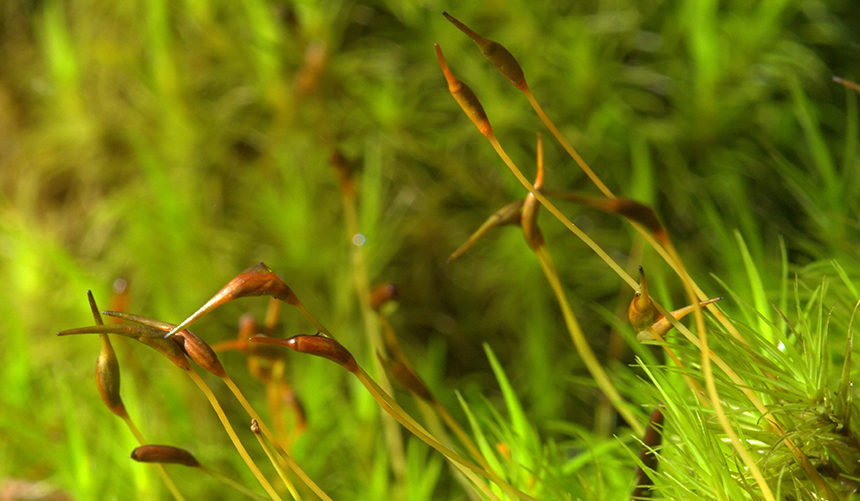Between storms, Gearhart photographer Neal Maine has been focusing his camera lens on some of the smallest plants in the rainforest. He was inspired by the lyrical essays in biologist Robin Wall Kemmerer’s award-winning book Gathering Moss: A Natural and Cultural History of Mosses (2003: OSU Press). Here are some of his favorite passages from the book (and a few favorites chosen by NCLC Communications Coordinator Bonnie Henderson, who’s also been savoring the book).

“Mosses are often described by what they lack, in comparison to the more familiar higher plants. They lack flowers, fruits, and seeds and have no roots. They have no vascular system, no xylem and phloem to conduct water internally. They are the most simple of plants, and in their simplicity, elegant.”

“Slowing down and coming close, we see patterns emerge and expand out of the tangled tapestry threads.”

“With just a few rudimentary components of stem and leaf, evolution has produced some 22,000 species of moss worldwide.”

“The type of chlorophyll in their leaves differs from their sun-loving counterparts, and is fine-tuned to absorb the wave lengths of light that filter through the forest canopy.”

“The rocks are beyond slow, beyond strong, and yet yielding to a soft green breath as powerful as a glacier, the mosses wearing away their surfaces, grain by grain bringing them slowly back to sand.”

“The city mosses have much in common with their urban human counterparts; they are diverse, adaptable, stress-tolerant, resistant to pollution, and thrive on crowded conditions. They are also well traveled.”

“What art of waiting is practiced by the mosses, crisped and baking on the summer oak? They curl inward upon themselves, as if suspended in daydreams. And if mosses dream, I suspect they dream of rain.”

“Mosses have a covenant with change; their destiny is linked to the vagaries of rain. They shrink and shrivel while carefully laying the groundwork of their own renewal. They give me faith.”
Comments